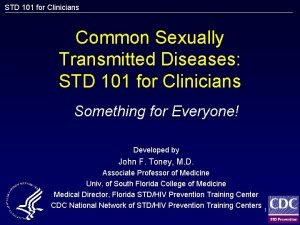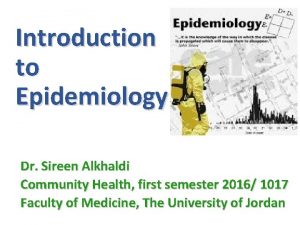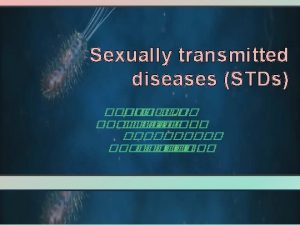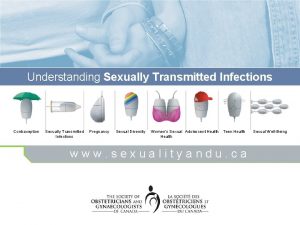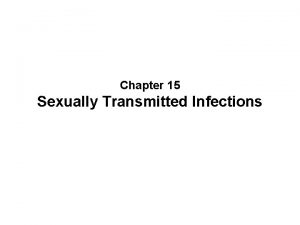Prevalence of HIV and other sexually transmitted infections




![Results 43. 2% [36. 6 -50. 0] had at least 1 STI at the Results 43. 2% [36. 6 -50. 0] had at least 1 STI at the](https://slidetodoc.com/presentation_image/38ae81f8cbdf25eeffb01e7ac69275ec/image-5.jpg)

- Slides: 6


Prevalence of HIV and other sexually transmitted infections (STIs) among female sex workers (FSWs) in Moscow, Russia: Results from a community-based, cross-sectional study using respondent driven sampling (RDS) methodology Ernst Wisse, Medecins du Monde @Md. M_France Share your thoughts on this presentation with #IAS 2019

Doctors of the World - Médecins du Monde - is an independent international movement of campaigning activists who provide care, bear witness and support social change 60 programs in 45 countries worldwide are aiming to enable excluded individuals and their communities to access health and fight for universal access to healthcare.

Context RDS : to sample hard-to-reach populations More than 1 m people with HIV. Incidence: +/- 10% each year No Harm Reduction policies SWs are disproportionately affected by HIV and other STIs Methodology 385 participants 179 outdoors: volatile spots along highroads (“tochkas”) 206 indoors: apartments, salons. Data collection : drop-in centre (DIC) and mobile unit Face-to-face socio-behavioural questionnaire; 2 rapid diagnostic tests for HIV and syphilis (lifetime contact); Throat, vaginal, anal swabs for screening of Chlamydia trachomatis, Neisseria gonorrhoeae, Trichomonas vaginalis, Mycoplasma genitalium. Recruitment tree: Seeds are identified by circles with thicker rims. Indoors are represented in pink, outdoors in orange. HIV negative are represented by circles, HIV positive by triangles.
![Results 43 2 36 6 50 0 had at least 1 STI at the Results 43. 2% [36. 6 -50. 0] had at least 1 STI at the](https://slidetodoc.com/presentation_image/38ae81f8cbdf25eeffb01e7ac69275ec/image-5.jpg)
Results 43. 2% [36. 6 -50. 0] had at least 1 STI at the time of the study with higher prevalence among outdoors (66%). The difference is significant for CT, TV and MG, and prevalence for HIV, syphilis and NG tend to be higher. Major differences observed between indoor and outdoor FSWs: Difficult access to condoms: 31. 7% of participants, 50% for outdoors. Inconsistent condom use: 36. 9% of participants, 44, 1% for outdoors. Never tested for HIV: 14. 0% of participants, 21. 2% for outdoors. 95% of outdoors not registered in Moscow = no access to public healthcare system. Sexual violence: 28. 8% had an unwanted sexual relationship (i. e. rape) in the previous 12 months: 43% for outdoors. Weighted HIV and other STI prevalence for indoor and outdoor FSWs

Conclusion HIV prevalence: 3. 1% = more than 3 x women in the general population STIs: more than 60% of outdoors having at least 1 STI at the time of the study Limited access to healthcare despite high needs Violence is frequent, both physical and sexual Recommendations • Improve access to sexual healthcare & rights adapted to SWs needs and constraints. • Implement programmes with a community approach, recognising the operational skills and expertise developed by SWs.





